Herding dogs are famous for their intense drive and their instinctive work with livestock. This article will give you a basic idea on how to train a dog to herd.
Herding dogs have been used to care for sheep, cattle and other animals for centuries. Some of the common herding breeds are shepherds, collies and, of course, sheepdogs.
The AKC writes, “herding breeds share an instinctual ability to control the movement of other animals” including at times their owners.
While many dogs possess the herding instinct, training a professional herding dog takes time, experience and trust.
“There’s a real charm in taking something that is kind of raw which is their instinctive work and getting it to work for you,” explains Amanda Milliken, owner of a sheep farm and several champion border collies.
How to Train a Dog to Herd
Herding success is rooted in a dog’s relationship with the animals it is herding and its handler. A relationship that Amanda describes as “complicated and fun.”
“You build and build a complicated language between a handler and a dog,” she explains.
“A dog has to trust you to be a good co-partner so if they think that you make intelligent decisions about the sheep their trust gets built up over time…. And soon they start to do things that you want them to do when you want them to do it instead of when they feel driven to do it.”
One of the hallmarks of a great handler-dog pair is two-way communication. By its attitude, speed and body language a dog can tell the handler how the livestock are responding and how best to move them. A handler can then respond accordingly.
Says Amanda, “In a great run there’s more of a conversation on the go than there is of a handler bossing a dog around.”
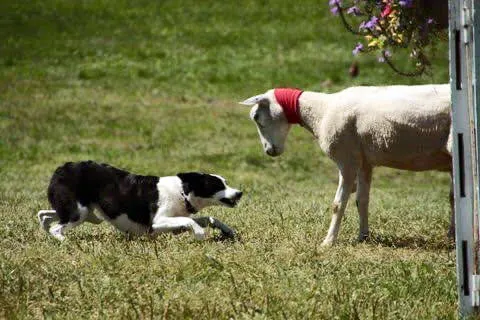
Training a Dog to Herd – Getting Started
Amanda gave us some insight on how to train a dog to herd. Training usually starts when dogs are about a year old. Prior to that Amanda’s focus has been on building her relationship with the puppies, helping them to understand the difference between right and wrong and establishing a working vocabulary by talking to them.
At 9 to 12 months, dogs have hopefully developed an interest in herding and they also are fast enough that they can outrun sheep, cattle or other animals. Simply chasing after livestock is not herding.
Daily training is important, so this usually means living on a farm and caring for livestock.
“You have to arrange your training situation so you can walk out your door to a dozen sheep and work your dogs for 20 minutes a day. Otherwise you never develop that language and rapport with them,” says Amanda, who keeps 150 sheep.
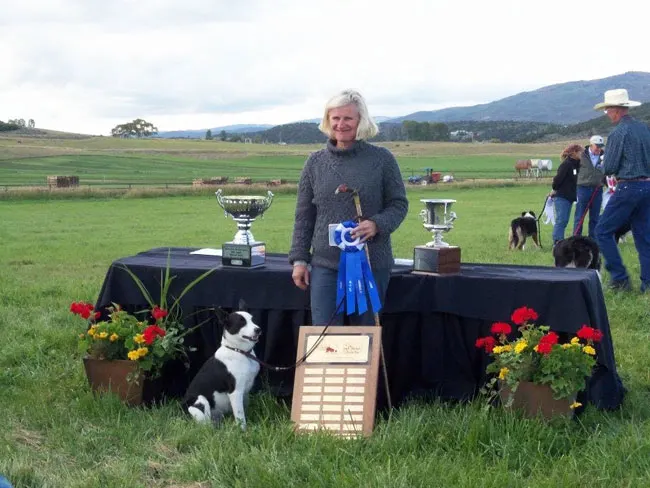
Commands to Teach Your Herding Dog
There are four basic herding commands: left, right, walk up and lie down.
Training starts with voice commands, but handlers usually transition to whistles fairly quickly. Whistles can be heard more easily over long distances, like 700-800 yards. Amanda also notes that you can be more precise with a whistle than with a voice command.
Based on the pitch or emphasis of a whistle a dog will know what the handler wants it to do. For example a big turn to the left may be communicated with a big long whistle versus a short soft whistle that means just step to the left. Or a slight stop versus a full stop.
As with any training, it’s important to go slowly and not push dogs too hard. Short intense training sessions are better than going out for an hour at a time and exhausting your dog. Herding is as much a mental exercise as a physical one, so over-training can exhaust a dog’s mind, which could diminish their enthusiasm. You should end the session with a dog that wants more.
Variety of Herding Dog Training Styles
Amanda strives to have a “lyrical” approach, where her dog can be fluid and responsive to the sheep. “I like to see somebody free their dog up on the front line. Not just a stop and go,” she says.
She also emphasizes that herding is about managing the stock and is not an obedience exercise.
“Often people go to trials and they say, “Oh that person said lie down and the dog didn’t lie down.” No, but it hitched… up its pace and slowed down and took the sheep at a slower pace and that was really the point of the command.”
Herding Dog Breeds
Herding dogs are very specialized. They have been bred for generations for the specific qualities needed to gather, herd and protect livestock. And different breeds are more suited to different types of stock. For example, border collies reign supreme when it comes to herding sheep.
Just a few of the many herding dog breeds include:
- Border collie
- Australian cattle dog (heeler)
- Corgi
- Old English sheepdog
- Belgian shepherd
- Collie
- Sheltie
- German shepherd
- Tervuren
- Australian keplie
- McNab
Note that there are dozens more herding breeds. This is just a short list of some of the popular herding breeds around the world.
Also, just because a dog is classified as a “herding breed” doesn’t mean it will be a herding dog. Just like there are some Labradors who don’t like water and won’t fetch a thing.
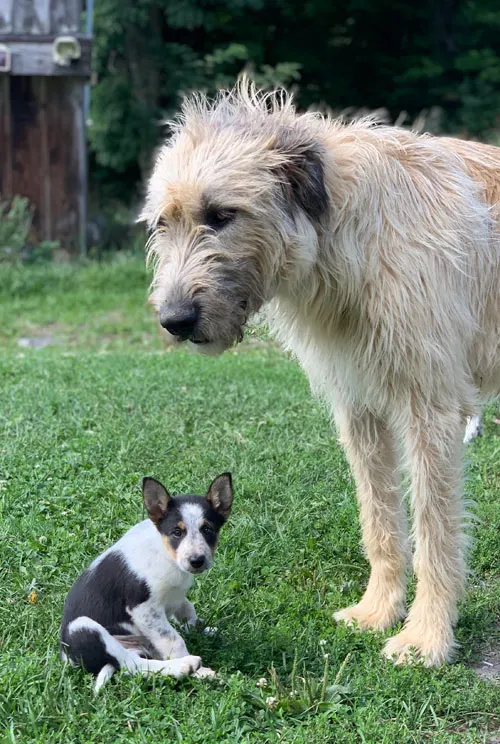
Choosing a Herding Dog Puppy
Amanda notes that it is very difficult to judge puppies. She advises people to look at the working records and styles of the parents.
Then she says, “You have to get a pup up to about a year old and then work it out with the stock and see how it pans out for you. Every dog has a different work style.”
As a handler becomes more experienced, they come to understand their own style and what type of dog works best for them.
“Suddenly you start seeing different traits in dogs that appeal to you and things that work maybe with your character a little better,” says Amanda.
Another option is to adopt an older dog who has experience with herding.
Amanda explains, “A handler might get to a place where they have some good very talented young dogs coming up. They know they don’t have too much time left for an older dog and they might sell it on to the right home… It will really help bring you along as a handler.”
Herding Dog Trials and Competitions
Handlers and dogs put their herding skills to the test at sheepdog trials. Trials take place across North America.
At a trial, a dog and handler move a small herd of sheep (usually three to six animals) around a pre-determined course.
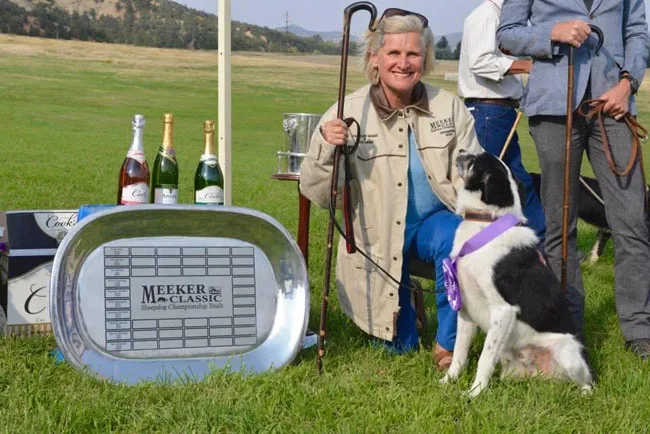
Competition levels include novice (for less experienced dogs), pro-novice (an experienced handler with a young dog or an inexperienced handler with an experienced dog) and open (for everyone). Each level requires different skills.
Skills Tested at Herding Dog Trials
Some of the skills tested in trials are below (The Working Sheepdog Website has a helpful glossary):
- Gathering: Begins with the outrun where the handler sends the dog to pick up the sheep. When the sheep begin to move under the influence of the dog, this is called the “lift.” The fetch is when the dog brings the sheep through the course toward the handler.
- Driving: The dog takes the sheep or cattle away from the handler. The Working Sheepdog Website notes, “Driving has a reputation for being difficult to teach because a dog’s natural reaction is to bring the stock to the handler rather than push them away.”
- Penning: The dog moves the sheep into a pen.
- Singling: Separating one or two sheep away from the main group.
The livestock are the big wildcard in any competition. Amanda explains, “It’s actually harder for dogs to work small groups [of sheep] than it is to work 150 because those are separated from their peers and they’re nervous and pull different directions. Whereas if they’re in a group they’re very relaxed.”
She notes that the breed of sheep used at trials varies by location. Western sheep tend to be more wily and difficult. “They always blow the minds of the dogs,” she says.
“What your training amounts to is preparing you for the things that happen on a trial field and you can’t predict what those are going to be,” she explains.
“You have to become extremely flexible and handle the problem as it presents itself to you on the field. And it’s your job to take those sheep around the course no matter what they’re like. Learning to be flexible is very important.”
It’s All About Bonding With Your Dog
Over the course of her career, Amanda has won numerous competitions, including the US national finals in 2005 and the Canadian championships seven times. But for her, the relationship with her dogs and the lifestyle she has built are most rewarding.
“These are very sophisticated partnerships that you get going with these dogs. They have an agenda and they want something to do… It creates a different character in that young dog. They’re proud of what they do.”
She concludes, “This lifestyle is worth it. It’s such a beautiful thing to do. It gives you such moments of incredible clarity and beauty and concentration.”
Have you ever watched a herding dog trial?
What is your experience with herding dog breeds?
Let us know in the comments below! We’d love to know about your herding dog!
Related articles:
- Livestock guardian dogs
- How dog agility training applies to all training
- Best breeds for running
- Therapy dog training
Julia Preston writes for That Mutt about dog behavior and training, working dogs and life on her farm in Ontario, Canada. She has a sweet, laid-back boxer mix named Baxter. She is also a blogger at Home on 129 Acres where she writes about her adventures of country living and DIY renovating.

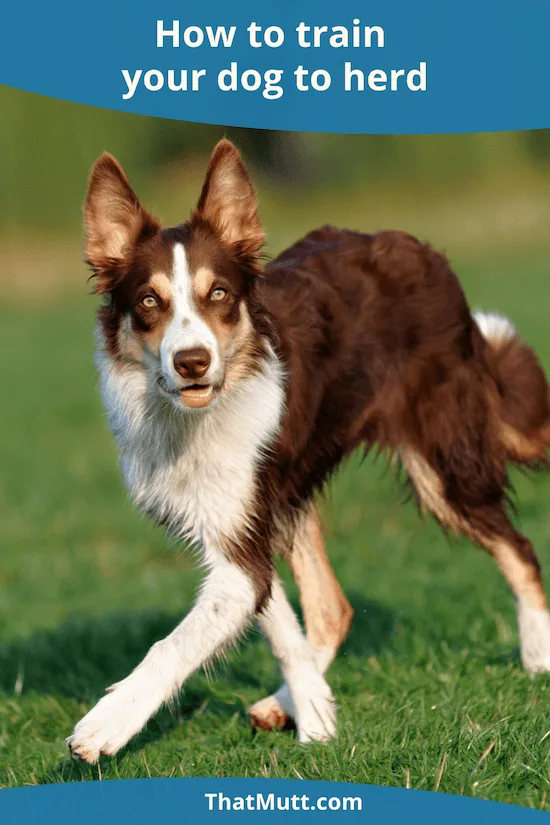
Maggie Adams
Thursday 9th of February 2023
I have had many border collies and have always wanted to learn and have my dog learn to herd. I have 4 right now and I think 2 of them could be fair herders. I split my time in Arizona and Washington state. I want to get connected with this community, and soon as both these pups are 1 and 2 in March. Thank you for your article. It was great information!